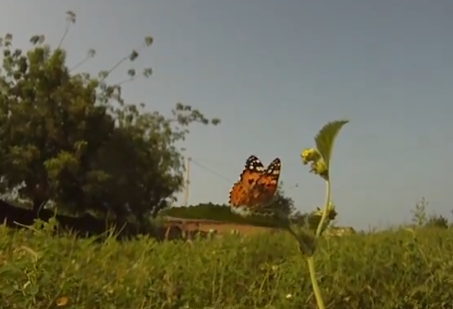No one in the scientific community could have seen this coming. How can the tiny butterfly cross oceans?
In October 2013, entomologist Gerard Talavera was walking on a beach in French Guiana when he encountered a surprising sight: about ten butterflies with tattered wings fluttering around. These were painted ladies (Vanessa cardui), a species commonly found around the world but not typically in South America. Talavera wondered how these insects had traveled so far from their usual range.
Painted ladies are known for their long migrations, covering up to 9,000 miles from Europe to sub-Saharan Africa. However, this journey involves stopping along the way to rest and refuel. Reaching South America would have required them to cross the Atlantic Ocean without any breaks.
These Stunning Butterflies Flew 2,600 Miles Across the Atlantic Ocean Without Stopping – Smithsonian Magazine https://t.co/YlmDwdP5IK
— Doc_Beatty (@ChrisDBeatty) June 26, 2024
Over the past decade, Talavera, an entomologist at the Botanical Institute of Barcelona, and his colleagues have been investigating this question. They now believe they have an answer: the butterflies likely made the 2,600-mile journey across the Atlantic from West Africa with the aid of favorable wind conditions. This finding was reported in the journal Nature Communications.
David Lohman, an evolutionary ecologist at the City College of New York, praised the research as “a brilliant piece of biological detective work.” Tracking migrating insects is challenging because they are too small to carry tracking devices, and radar can only monitor specific regions. Scientists have traditionally relied on observations from citizen scientists, but this method is not always reliable.
To determine how the painted ladies ended up in French Guiana, researchers approached the problem from multiple angles. They analyzed weather data leading up to the butterflies’ arrival and found that wind conditions could have supported a voyage from Africa to South America. Genetic sequencing of the butterflies’ genomes revealed that they were related to insects from Africa and Europe, ruling out a migration from North America. Isotope analysis of the butterflies’ wings suggested they were born in western Europe and western Africa.
World-First Evidence Shows Butterflies Can Fly Over 4,000 Kilometers Across The Atlantic Oceanhttps://t.co/J9V1EromVc
— IFLScience (@IFLScience) June 26, 2024
The researchers also sequenced the DNA of pollen grains on the butterflies’ bodies, identifying plants like Guiera senegalensis and Ziziphus spina-christi, which only bloom at the end of West Africa’s rainy season. This evidence strongly suggests that the painted ladies flew across the Atlantic Ocean, a feat never recorded before.
Combining these techniques provided new insights into the butterflies’ journey. Talavera noted, “Combining these techniques is really helping and is getting us to places where we couldn’t go before.”
Wind played a crucial role in the butterflies’ journey, which the scientists estimate took between five and eight days. The Saharan Air Layer, known for blowing dust from Africa’s Sahara Desert to South America, appears to have also helped the butterflies. This air current can carry dust all the way to Florida, where it sometimes temporarily prevents hurricanes.
🚨 In 2013 researcher @GerardTalavera spotted a group of #PaintedLady butterflies in the beaches of #FrenchGuiana
But this species does not occur in South America, how did they get there?
Well, a new discovery shows that the butterflies flew across the Atlantic Ocean! 🌊
🧵⬇️ pic.twitter.com/PQ67UIL3WN
— Institut Botànic de Barcelona (@IBB_botanic) June 25, 2024
Study co-author Eric Toro-Delgado explained, “The butterflies could only have completed this flight using a strategy alternating between active flight, which is energetically costly, and gliding on the wind. Without wind, the butterflies could have flown a maximum of 485 miles before exhausting their energy.”
Key Points:
i. In 2013, entomologist Gerard Talavera discovered painted lady butterflies in French Guiana, far from their typical range.
ii. Painted ladies are known for long migrations but usually rest along the way, making the Atlantic crossing unusual.
iii. Researchers believe favorable wind conditions helped the butterflies make the 2,600-mile journey from West Africa to South America.
iv. Genetic and isotope analyses, along with pollen DNA on the butterflies, confirmed their African and European origins.
v. The Saharan Air Layer’s wind currents played a crucial role, allowing the butterflies to glide and conserve energy during their journey.
Susan Guglielmo – Reprinted with permission of Whatfinger News



